How to Use a Marijuana Grow Calendar for Cold Places – Bonza Blog
How to Use a Marijuana Grow Calendar for Cold Places:
A marijuana grow calendar is our best friend when we start cultivating weed. This is especially true when we live in cold regions. In general, the difficulty level of growing weed is higher in the northern part of the country, including Alaska. Hence, we need a tool to help the process go along smooth and easy.
This is where the grow calendar comes in. Essentially, it instructs the grower what to prepare and when exactly to do it. Hence, it helps us organize the tasks based on priority and make sure that we accomplish them.
Normally, snowstorm is a regular part of the northern regions. So, we need to wait for the warm days before we start planting the seeds. This means that we have plenty of time on our hands before the growing season.
However, if we use a grow calendar, we will realize that there a lot of things to do before the actual planting begins. So, if we start preparing as early as possible, our chances of getting bountiful weed increases. This is why many growers develop and utilize their own grow schedules.
As such, smart growers listen to advices and learn the techniques from others. So, in this article, we will share one of the best ways to boost the yield of our harvest. Starting from February and ending in October, here are the tasks to perform when we grow marijuana outdoors.
Essential Tasks to Accomplish in Each Grow Month

Grow Month – Image powered by Empireofsoccer.com
A grow calendar has information on what tasks needs to be done from start to finish. But first, we need to learn the average day length and temperature of certain regions. This one is based on Chicago, New York, and Seattle. So, if we are growing on the northern West Coast, the springtime temperature will be warmer than average. On the other hand, expect the summer temperatures to be cooler than the average.
- February
Knowing the length of a day is an essential component when growing weed. As any grower knows, the bright hours play a huge part in photosynthesis. On the other hand, the dark hours trigger the flowering phase. To make it work, both the bright and dark hours must follow a certain cycle.
- Average Day Length
In February, the average day length is 9 hours 30 minutes to 11 hours 15 minutes. In Alaska, it’s 8 hours 30 minutes to 10 hours 30 minutes. Since the plants need longer hours to grow well, this is not the right time to start planting.
- Average Temperature
In addition, the average temperature in most northern areas is 22 to 51 degrees and -8 to 12 degrees in Alaska. Since marijuana seeds need warmth to nudge them to sprout, planting during this cold month will not result in germination.
- Tasks
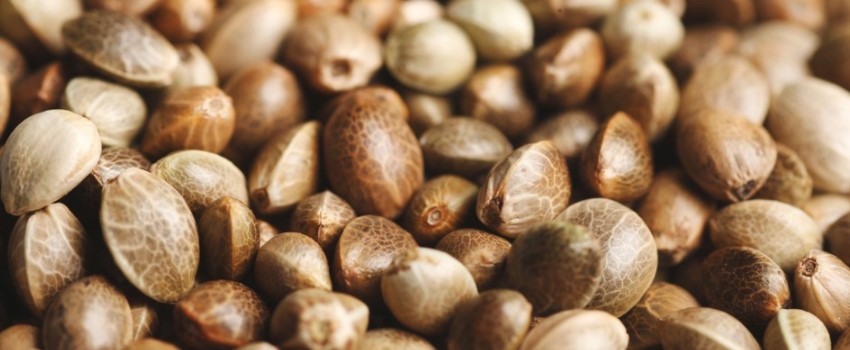
Tasks – Image powered by Leafly.com
Since February is clearly not the best month to plant, make use of the time by doing some prep work. The following are examples of the things we can do while waiting for the frost to melt.
Go online and select the best seeds. To get satisfying ones, it’s wise to do some research first and choose the strain that fits best our needs. For example, many growers prefer to get the Indica strain because it requires a shorter time to grow.
Growers who live in places like New York and Boston can extend the grow period by sprouting indoors. This way we can plant even the strains that need longer time to grow. By the end of February, we can hasten the process by providing artificial lights.
If we want our own marijuana clones, we can also start growing by this time. Furthermore, if it’s possible, start preparing the soil and add worms and compost after the final frost.
The grow room must have fresh air that can circulate well inside it. Also, an adequate grow space is vital for the leaves as well as 18 hours of CFL light. Equally important is a temperature that is between 66 and 77 degrees.
- March
In March, the coasts start to warm up which signals that the growing season is drawing close. In fact, days are getting longer in Seattle and Portland. So, we’d better get ready.
- Average Day Length
The average length of days extends from 9 hours 30 minutes to 12 hours 50 minutes. As usual, days are a bit longer in Alaska which averages at 10 hours 40 minutes to 13 hours 15 minutes.
- Average Temperature
Most noticeable in March is the increase of average temperature. This time, it’s 31 to 54 degrees in most northern regions, and 0 to 24 degrees in Alaska.
- Tasks
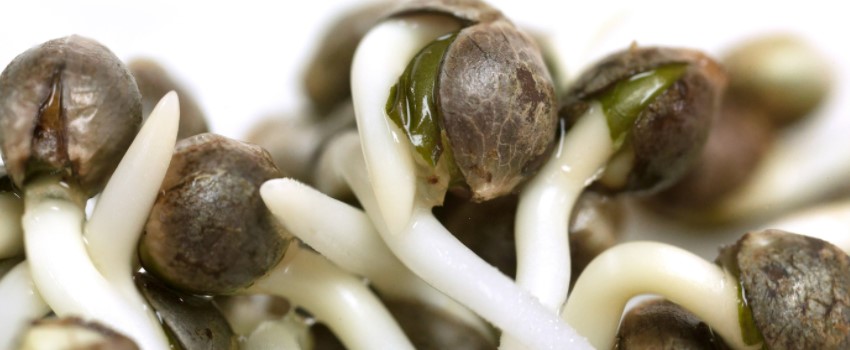
Tasks – Image powered by Marijuana.com
Due to the warmer weather, many growers take the advantage to start sprouting in March. So, we should already have chosen some seeds by now. To get a good start, the following tasks focus on taking care of the seedlings.
If we already have good seeds, we can start sprouting them on a windowsill especially by the end of the month. This way, they get some good sunlight and grow ahead of time.
In areas where there is not much sunlight, make sure that some grown plants don’t flower prematurely. We can do this by placing a lamp over the plant a few extra hours each day.
For growers who plan to clone the marijuana plants, it’s best to have the mother plant ready for this month. This will give us plenty of time to grow the clones.
- April
Longer days begin in the middle of this month, signaling the start of the flowering season. By the end of the month, all the northern areas will have at least 14-hour days. Once the days are that long, we will no longer need artificial lighting.
- Average Day Length
April is when the average day length is12 hours 40 minutes to 14 hours 25 minutes. In Alaska, it’s even longer at 13 hours 15 minutes to 15 hours 45 minutes.
- Average Temperature
As expected, the average temperature of many places goes up to 35 to 62 degrees. While it’s still a little cold in Alaska at 24 to 45 degrees, it’s enough to start growing weed.
- Tasks
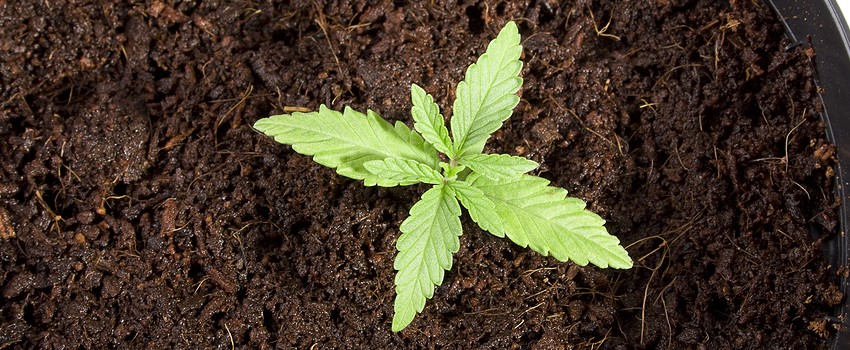
Tasks – Image powered by Marijuanagrowershq.com
The highlight of April is the longer and sunnier days. Thus, if we still haven’t sprouted the seeds, this is the best time to do it. Moreover, there are new tasks that we must accomplish to kickstart the vegetative phase.
Before we take the plants outside, make sure that the risk of frost has passed. In most areas, this is most likely by the end of the month. Meanwhile, growers in Alaska need to wait for another month for this.
When taking the plants outside, we need to put them in a container first. After soaking up the bright hours for more than 12 hours, we can bring them in at night. This makes sure that they don’t get damaged by the cold nights.
For those who want to make clones, this is the best time to create them from the mother plant. The longer and warmer days will help the cuttings develop roots and grow new leaves fast.
- May
Finally, it’s spring, even in Alaska. So, growers can now observe even longer days and warmer weathers.
- Average Day Length
In many northern countries, the average length of a day is 14 hours to 15 hours 40 minutes. In Alaska, it’s15 hours 45 minutes to 17 hours 45 minutes.
- Average Temperature
The average temperature is 52 to 72 degrees and 40 to 61 degrees in Alaska. This means that growers in the Alaskan coast can now safely start moving the plants outside. However, we still must be vigilant of the frost. To be safe, those who live in the Alaskan interior should only bring the plants outside in the middle of the month.
- Tasks
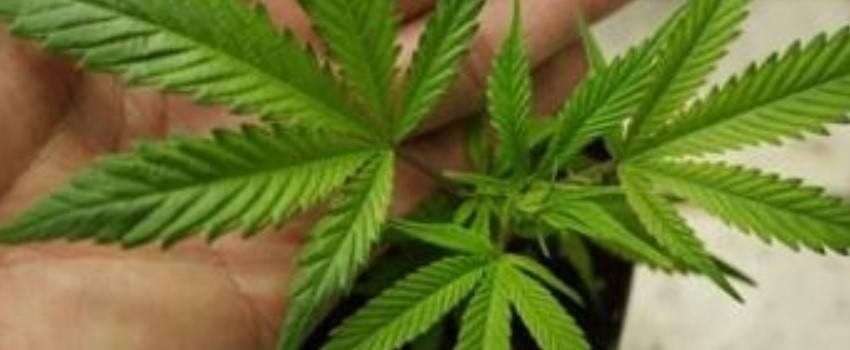
Tasks – Image powered by Hempbeach.com
Since we have the correct length of days and ample sunlight, we can start taking care of other things. This includes giving the right amount of water and fertilizers to boost growth. When plants get what they need, they become healthy and more able to produce rich buds.
If we want a shorter grow cycle, growing auto flowering plants is the way to go. Since they need only three months of summer to grow, May is the best month to sprout them. This way, we can harvest them by mid-August.
For some places in the Midwest and Alaska, it’s all the time they have before the temperature becomes too cold for the plants.
- June
The marijuana plants will experience the most growth in June, especially between the 18th and 24th. Due to the warming temperatures, the auto-flowering plants will begin to develop bud sites. Also, the regular strains will speed up their growth, growing more leaves and prepare for the flowering phase.
- Average Day Length
The average day length is14 hours 50 minutes to 15 hours 55 minutes. In Alaska, it’s 17 hours 50 minutes to 18 hours 15 minutes.
- Average Temperature
Meanwhile, the average temperature is 54 to 81 degrees and 52 to 71 degrees in Alaska.
- Tasks
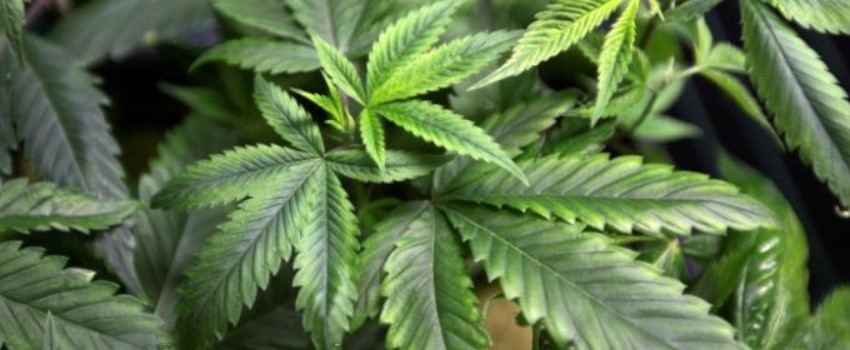
Tasks – Image powered by Reutersmedia.net.com
Under perfect conditions, the plants will be growing rapidly and nicely during this warm month. Hence, all we can do is continue providing all the basic needs.
- July
In this hot month, we can expect the auto-flowering plants to now have large flower clusters. Meanwhile, some of the regular plants will start showing their first pistils.
- Average Day Length
The average day Length is 14 hours 5 minutes to 15 hours 55 minutes. In Alaska, it’s 16 hours 30 minutes to 18 hours 15 minutes.
- Average Temperature
The average temperature is 58 to 85 degrees, and 55 to 73 degrees in Alaska.
- Tasks
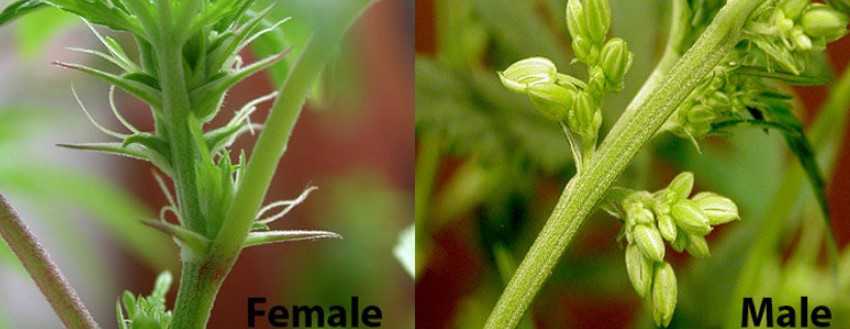
Tasks – Image powered by Ilovegrowingmarijuana.com
The main task for this month has a lot to do with identifying the sex of the plants. This is especially important when we are using non-feminized seeds. As such, we must keep an eye on male plants since they tend to turn potential buds to seeds.
A male plant has flowerheads that look like two small balls on a thin stem. When we see something like this, we must immediately remove the plant. This way, we ensure that all the plants will produce the prized buds.
- August
As we near the harvesting season, most northern area will have less than 14 hours of daylight. This is especially true near the end of August. However, Alaska is the exception. All in all, this period signals the last flowering phase of non-auto flowering plants.
- Average Day Length
The average day length is 13 hours 5 minutes to 14 hours 55 minutes. In Alaska, it’s 14 hours to 16 hours 25 minutes.
- Average Temperature
The average temperature is 58 to 84 degrees and 49 to 66 degrees in Alaska.
- Tasks
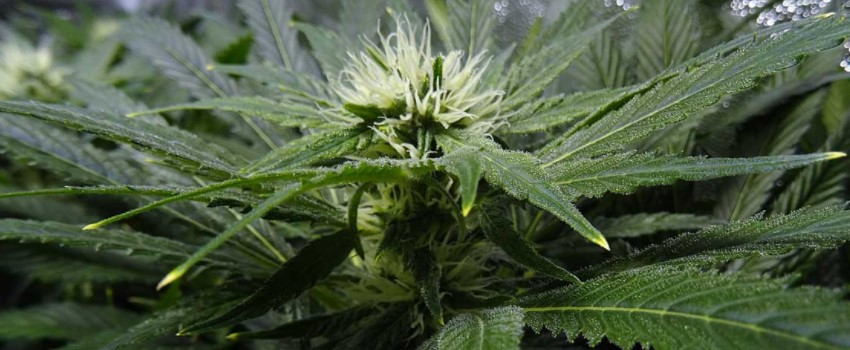
Tasks – Image powered by Growweedeasy.com
August is the harvest month for auto flowers. So, if we sprouted some of them back in late May, it’s time to focus our tasks on collecting the buds.
For best results, hang the buds upside down in a dark place after cutting them. This process will dry them using room temperature for about 10 days. We will know that they’re done drying when the branchlets crack after bending it.
As for the non-auto flower growers, they will notice the plants showing some pistils. Normally, these long wispy hairs will get darker as time passes. At this point, they will be white and straight. Also, expect to see them get curlier which often signals maturity.
- September
By the end of September, autumn officially begins which marks the final phase of the grow cycle. But in the West Coast and Alaska, it will be a slow transition as the sun tends to linger around a bit longer.
- Average Day Length
The average day length is 11 hours 40 minutes to 13 hours 20 minutes. In Alaska, it’s 11 hours 30 minutes to 14 hours.
- Average Temperature
The average temperature is 54 to 76 degrees, and 38 to 55 degrees in Alaska.
- Tasks
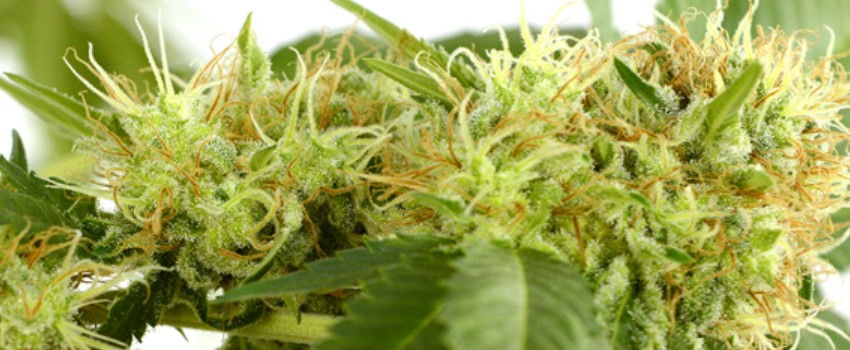
Tasks – Image powered by Ilovegrowingmarijuana.com
The non-auto flowering plants will start developing more pistils at the beginning of this month.
Furthermore, they will produce more buds and will use all their energy to increase the THC content. To preserve their quality, make sure to keep them dry this time. Perhaps, we can build a shelter, or take them indoors to protect them from moisture.
Another important to consider at this period is the wind since it can be a big problem to the crop. Left unchecked, it can blow the plants down which can damage stalks and leaves. So, prevent this from happening by protecting the crop with a net or bamboo sticks.
- October
We are finally in the final part of the grow calendar. During this period, many outdoor plants demonstrate vigorous blooming. As such, it is high time for the buds to mature which means that we will be harvesting them this month.
- Average Day Length
In October, the average day length of most northern areas is 10 hours to 13 hours and 5 minutes. In Alaska, it’s 11 hours 30 minutes to 14 hours.
- Average Temperature
The average temperature is 46 to 64 degrees, while in Alaska, it’s 20 to 33 degrees.
- Tasks
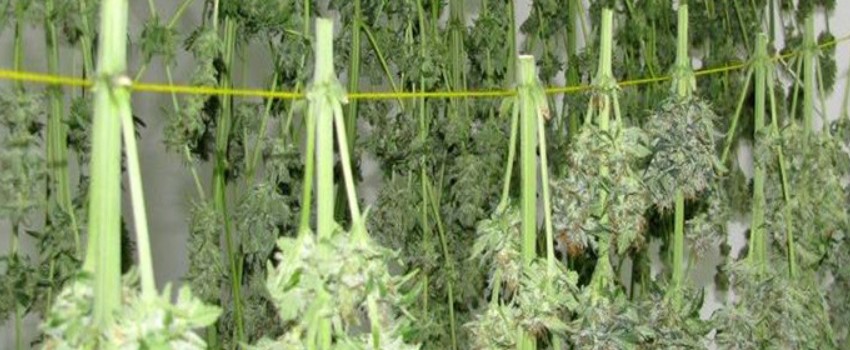
Tasks – Image powered by Magazine.grasscity.com
In general, October is an exciting month in the grow calendar since we will be finally collecting the weed. But it can also be very stressful since a small problem in the harvesting process can make things quickly go south.
Add to that, a swift change of season brings colder temperatures and higher humidity. Hence, most northern growers, especially in the Midwest and Alaska, where it’s cold, need to watch out for bud rot. The same thing applies to growers in wet areas like the Pacific Coast.
To get best results, we must enter this month prepared to harvest the buds as well as make sure that moisture doesn’t damage them.
Using a Marijuana Grow Calendar Ensures Success
When growing marijuana, always use a grow calendar to get some guidance on the task at hand. This will significantly make our work a lot easier while ensuring a more successful outcome.
So, before diving into the marijuana growing business, make sure to focus on the preparation. Especially for northern growers, knowing the basics such as the length of day and temperature go a long way. As such, we can maximize outdoor yield by being fully prepared using the marijuana grow calendar.

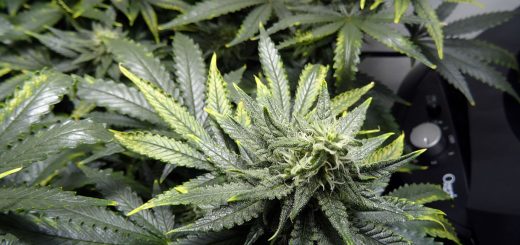
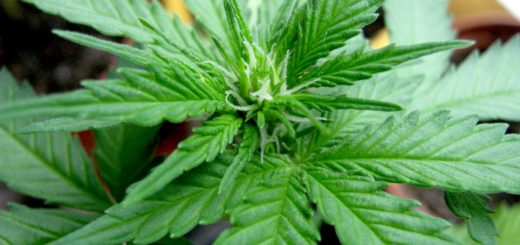
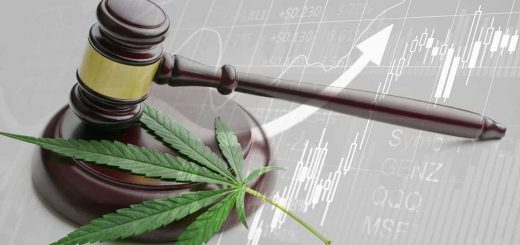
Recent Comments